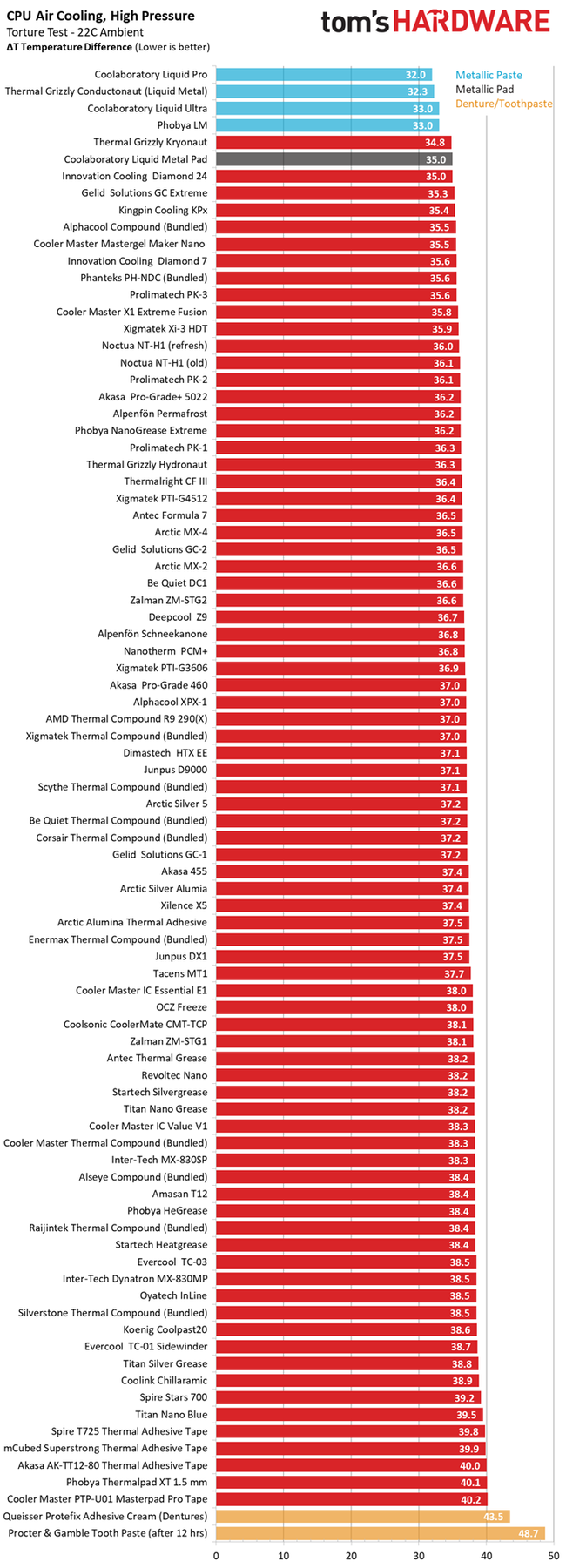Knitted Knight
Banned
Today Sony has revealed that they use an exotic and innovative liquid metal TIM* to cool its APU**. As a result, despite high clock frequency on both the CPU/GPU (3.5 Ghz/2.23Ghz***); the system has been reported to run cool and silent, even in a 30 degree Celsius room while running graphically demanding next-gen games like GodFall - cool to the touch even (link here). The adoption of this solution is the result of over 2 years work by Sony.

There are many benefits to using Liquid Metal as TIM, and you can read on benchmarks discussing its performance on some Intel processors @ this link. In laymen terms, with liquid metal TIM you see a significant improvement in cooling on high frequency operating regimes (which includes overclocking, and stock high-clocked processing units). This in turn allows you to pack a lot of power hungry, high heat inducing processing on compact consumer electronic shells that require the small form factor as a selling point (not to mention, smaller everything is always preferable as long as good performance is maintained).
There is a wealth of literature on this subject. So to not dwell deeper and to leave plenty of room for discussion (and member additions) I leave the floor to you. Feel free to opine. But before I do I leave you with a poll and a few questions.
Are we witnessing a new era in the methods used to cool high performance hardware in small, compact form factors?
Do you believe Sony leading the charge in the console space is a positive industry-wide development? Should others in the console industry follow? Will this slowly affect the PC market as well?
Were you caught by surprise by the announcement? Despite the rumors?
Are you scared by the new tech? Fear of failure? Fear of its success? (it's ok ).
).
------------------------------
*TIM: Thermal Interface Material.
**APU: An accelerated processing unit (APU) is a microprocessor that combines the central processing unit (CPU) with the graphics processing unit (GPU) on a single computer chip.
*** Variable Frequency.

 Nowcry
Nowcry


There are many benefits to using Liquid Metal as TIM, and you can read on benchmarks discussing its performance on some Intel processors @ this link. In laymen terms, with liquid metal TIM you see a significant improvement in cooling on high frequency operating regimes (which includes overclocking, and stock high-clocked processing units). This in turn allows you to pack a lot of power hungry, high heat inducing processing on compact consumer electronic shells that require the small form factor as a selling point (not to mention, smaller everything is always preferable as long as good performance is maintained).
There is a wealth of literature on this subject. So to not dwell deeper and to leave plenty of room for discussion (and member additions) I leave the floor to you. Feel free to opine. But before I do I leave you with a poll and a few questions.
Are we witnessing a new era in the methods used to cool high performance hardware in small, compact form factors?
Do you believe Sony leading the charge in the console space is a positive industry-wide development? Should others in the console industry follow? Will this slowly affect the PC market as well?
Were you caught by surprise by the announcement? Despite the rumors?
Are you scared by the new tech? Fear of failure? Fear of its success? (it's ok
------------------------------
*TIM: Thermal Interface Material.
**APU: An accelerated processing unit (APU) is a microprocessor that combines the central processing unit (CPU) with the graphics processing unit (GPU) on a single computer chip.
*** Variable Frequency.


Last edited:






